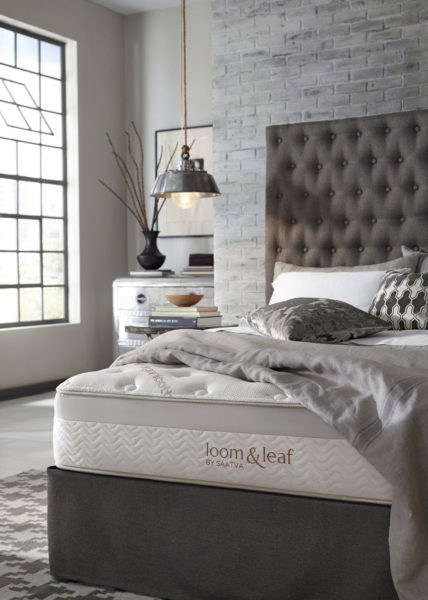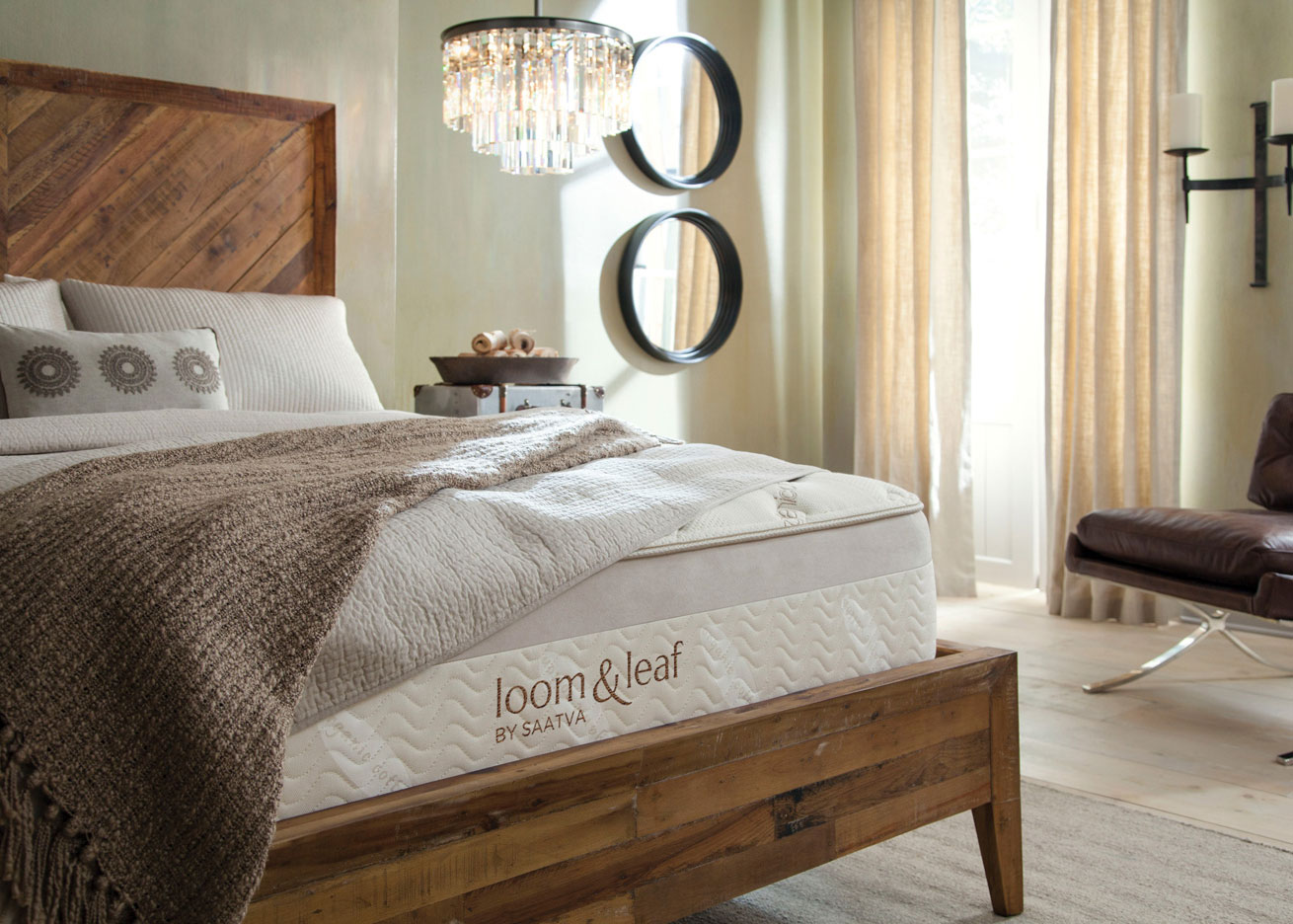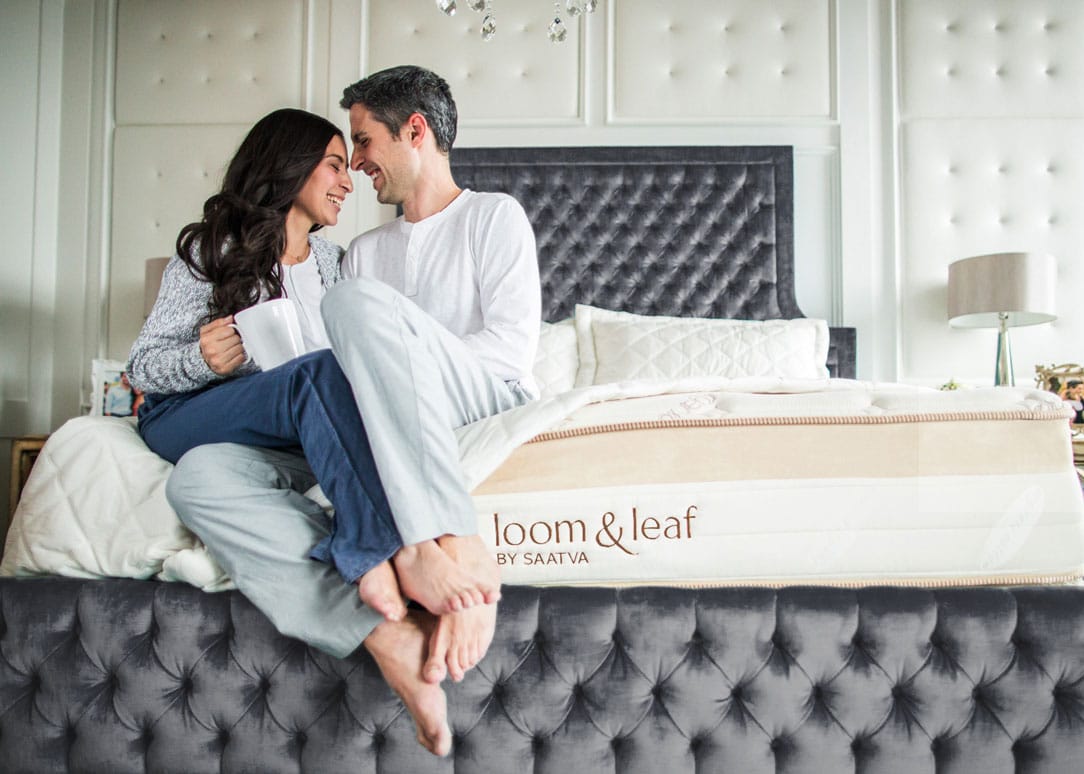Financial woes, global warming, personal health risks—these aren’t what dreams are made of. These and other worries are eliminated when you buy one of Saatva’s mattresses, according to CEO Ron Rudzin, who says you should rest easy.
Saatva is environmentally responsible, and it’s not just something they say—you’ll see green in every aspect of their products. Rudzin launched Saatva in 2010, and it’s already the largest, most successful online-only mattress company. About two years ago, Saatva also launched Loom & Leaf, the luxury memory foam bed you’d compare to Tempur-Pedic, except that Loom & Leaf costs $999 for a queen, while most luxury memory foam mattresses run approximately $2,600 in retail stores.

Photo courtesy of Saatva
The Materials
Made in the USA, Saatva’s mattresses have no mercury, lead, or heavy metals, no PBDE flame-retardants, no formaldehyde, and no ozone depleters, among other benefits. The five-pound ultra-premium memory foam in Loom & Leaf used to be available only in expensive mattresses—until Saatva created its premium line that’s affordable for everyone as well as eco-friendly and cooling, with four comfort layers, cooling gels, and an organic cotton top.
Sleep is an activity.
Saatva uses plant-based foams that are not only sustainable (their suppliers use renewable plant oils to reduce the greenhouse gasses common in the process), they’re shipped whole and stable to 18 U.S. factories. That means the foams aren’t shrink-wrapped. Where other companies save money by shipping foams moist and shrink-wrapped, opening the foam so it expands and off-gasses upon arrival, Saatva doesn’t. In fact, the company pays extra to avoid it, Rudzin says.
“Everything is expanded before it even gets to our factories where they’re built—that’s why our mattresses are odorless,” he says. All of Saatva’s foams are also CertiPUR-US certified, and Saatva is a lead sponsor of the Sustainable Furnishings Council, alongside Mitchell Gold + Bob Williams and Room & Board, funding research to make the home furnishings industry even more environmentally responsible.

Photo courtesy of Saatva
“We have found the perfect combination of health, quality, environment, and affordability,” Rudzin says. Thirty to 40% of the petroleum that would be used to make the foams has also been replaced with soy and corn oil, and Saatva’s mattresses have a plant-based, natural flame retardant made using wood pulp.
Keeping Costs Low
The fact that Saatva is online-only plays a big part in why their mattresses cost less. When you go online and order from Saatva, you’ll receive a custom-made (that’s right, the mattress isn’t made until you order it) mattress within a couple of weeks from one of the company’s 135 fulfillment centers in the U.S. Sure, you’d get it faster if all of that inventory was on-hand, but maintaining extra inventory requires space, and space means cost.
Rudzin says it’s easy to keep costs down when you don’t have the overhead. Saatva pays no commercial rent—there’s no storefront so there’s no excessive commission, store fees, or utility costs. “[In retail stores], people go in and spend $3,000 on a product. So much of that is going into the expenses of the store you’re buying it in,” he says.

Photo courtesy of Saatva
If Saatva wasn’t online-only, the company would need roughly 160 stores to move its volume. But instead, the company saves money, passes savings onto customers, and helps the environment by reducing energy along the way. “We don’t turn on that many heaters or air conditioners, and we have a much lower carbon footprint,” Rudzin says. Oh, and Saatva’s raw materials still cost $1,000 less than competitors’.
A Saatva team will set up your mattress anywhere in the contiguous United States and parts of Canada, and you can try it for free for up to 75 days. That’s a lot more realistic than lying on a bed in a store and deciding whether it’s the right fit. Rudzin will tell you again and again, “Sleep is an activity.” You shouldn’t have to lie on a mattress for two minutes under harsh fluorescent light with a salesperson hovering over you and make a decision you’re stuck with for years. Sleep on it. And if you have a question, call the 24-hour concierge service anytime, day or night.

Photo courtesy of Saatva
Tremendous Growth
Saatva has been profitable since its third month in business. How? For starters, the company was one of the first players in selling a high-end product online. “When I first started Saatva, I believe there were less than 20 billion searches a month—for all products. Today there’s over a 150 billion searches a month—for all products. As search continues to grow, the Saatva company has become a top four market in the U.S. Sealy, Tempur-Pedic, it’s us with them.”
The proliferation of internet searches also meant Rudzin could tell the company’s story without spending advertising dollars on billboards or TV commercials. Instead, he could target only those people who actually wanted to buy a mattress. “I can go right to this place where people search for mattresses,” he says. Now, if you type “mattress” into a Google search, you’ll see Saatva.
And Saatva isn’t buying into the business model that you must cater to millennials. Instead, Saatva’s sweet spot is 35 to 65 years old, with an average $150,000 family income. Half of customers buy king-size mattresses and half buy queens, compared to the national norm of 30% king and 70% queen. Saatva’s customers are looking for luxury, at no expense to nature. They’re forward-thinking, willing to spend time researching the best products, and they like nice things. “We have the best priced, eco-responsible mattresses on the market,” Rudzin says.

